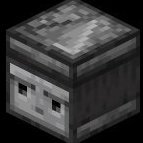-
Posts
91 -
Joined
-
Last visited
Content Type
Profiles
Forums
Events
Everything posted by observer1
-
do they really keep it in fireworks? any way to see if it really is aluminium?
-
So i searched some fireworks and found one which contains only sulfur and some silvery metal pieces. I added NaOH into it and the metal pieces started bubbling and turned black and the gas that came was not that smelly but was chocking the thing i wanted to do was to take a mix of solid NaOH and the powder and add water to it so that the heat from NaOH dissolving could help react NaOH and sulfur to make Na2S and Na2S2O3 so my doubt is what could the metal be? properties:- silvery reacts with NaOH and becomes black releases some gas when reacted with NaOH Brittle used in fireworks
-
so basically, it might be the organic stuff reacting with air while in water and turning yellow to get around it, I started evaporating in a larger plate, so more surface area and faster evaporation, so not it is becoming nice long white crystals. if i heat it it basically turns black
-
pretty sure, reactivity series says it will occur. can't test it because I don't have a magnesium ribbon
-
Answer shall come in 2 weeks
-
@exchemist?
-
btw I forgot to mention that it only appears yellow when concentrated. When kept in a lot of water, the water appears transparent. Also, will I be able to break the proteins if I heat them, making it somewhat whiter?
-
so like if the layer is not calcium acetate, I will remove it. I am doing this just to confirm because I can't find anything about this in google
-
It was white eggs I basically was following this video, except i did not heat it to evaporate, I lift it to evaporate Link :-https://youtu.be/32vCLXTjnyQ
-
yes, so is this yellow because of me using eggs or is something ELSE happening?
-
when i filtered it, i say no insoluble particles
-
So I basically wanted to make calcium acetate. So I took some vinegar and egg shells, mixed them and kept them in a container fr about about 3 weeks. I kept an excess of eggs and it finally stopped reacting. After that, I transferred the water and calcium acetate without the shells or the egg layer using a filter. I later left the cup to evaporate fr about 2 weeks and a mostly transparent, yellowish layer started forming on top. Is is calcium acetate?
-
so in a reaction, if both the reactants and products are soluble in water, the reaction does not take place while if the product is not completely soluble in water, then the reaction is possible. Also if the reactants are no soluble in water, the reaction does not take place
-
why does that happen? is it because here both sides completely dissolved while in the one I gave, Ca(OH)2 is slightly dissolved in water?
-
so since Ca(OH)2 is slightly soluble and not completely, the reaction is not possible now i understand so, just asking, let's ASSUME Ca(OH)2 is also soluble, then the reaction will go back and forth?
-
that was what I was just telling. Only the first reaction is possible because both the reactants completely are soluble in water
-
That, frankly, is all I understood form the https://en.wikipedia.org/wiki/Solubility_chart link u sent. I was specifically looking about this reaction and that was the only difference I found(from the table u sent) if you can, can you pls explain this in a much simpler was or give a video for it?
-
the first reaction is possible since both disassociate in water
-
Ca(CH3COO)2 + 2NaOH ---> 2CH3COONa + Ca(OH)2 or 2CH3COONa + Ca(OH)2 ---> Ca(CH3COO)2 + 2NaOH
-
so the problem is the hydrogen atom
-
so in that reaction, the acetic acid will again react with CaCO3 to form calcium acetate again then why doesn't this reaction occur? Ca(CH3COO)2 + NaHCO3 ---> CaCO3 + CH3COONa + H2 here the hydrogen leaves as gas
-
so is is VERY unlikely for the reaction to occur or it it basically not possilbe?
-
The reaction between Ca(CH3COO)2 + Na2CO3 ---> CaCO3 + 2CH3COONa But why can't the same displacement reaction happen when NaHCO3 is added to Ca(CH3COO)2 Why does it show that no reaction happens when they are mixed? (type it in google)
-
Here is what i did:- CaCO3(eggshells) + 2CH3COOH ---> Ca(CH3COO)2 + H2O + CO2 Ca(CH3COO)2 + 2NaHCO3 ---> 2CH3COONa + CaCO3(powder) + H2O + CO2 The problem is that there is nearly no way for you to know that if the residue on the bottom of the container is caco3 or nahco3 since both are white and insoluble. so i want a way to separate both of them


